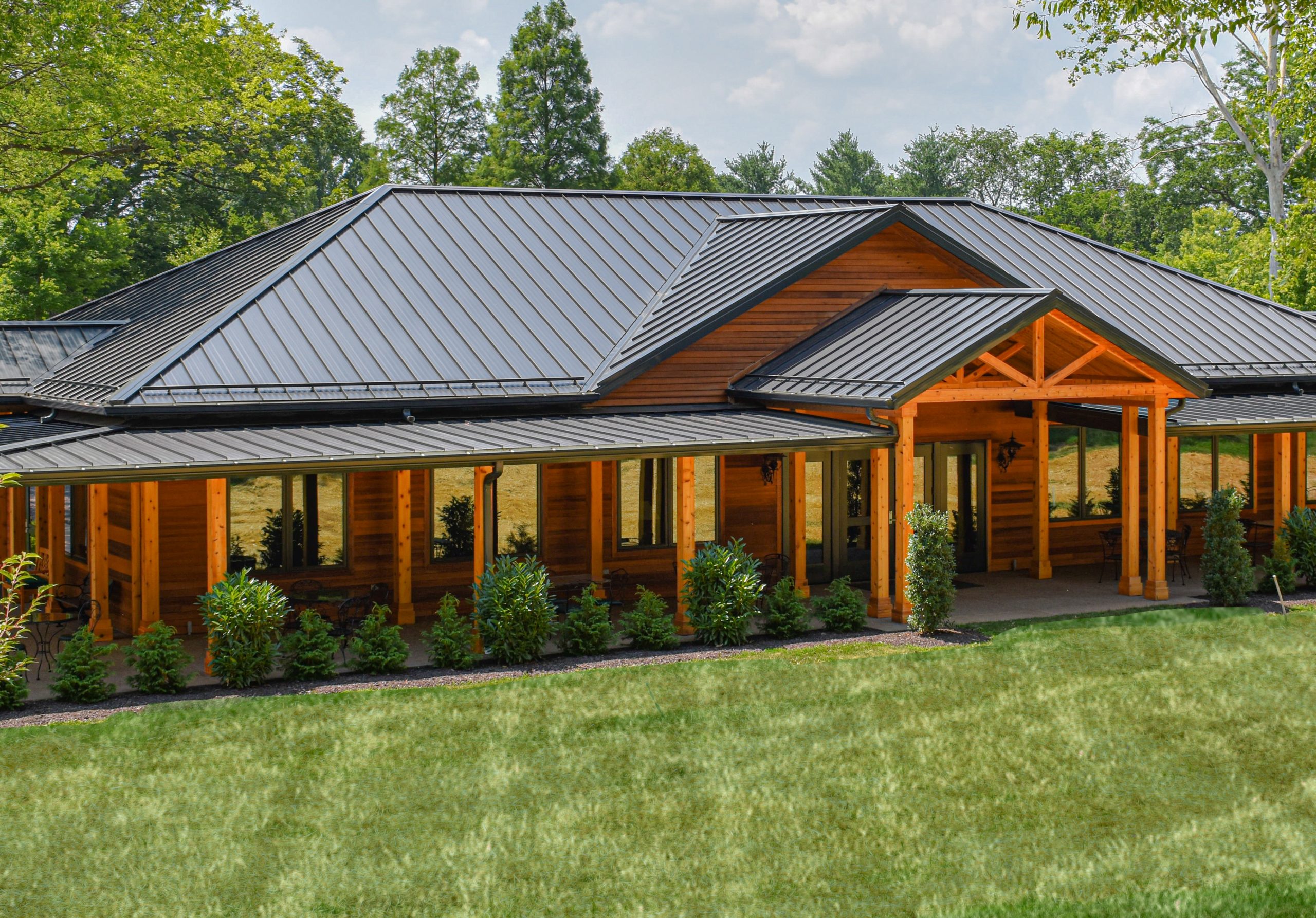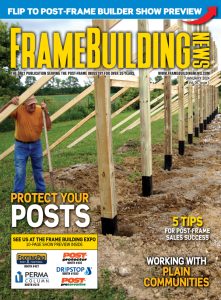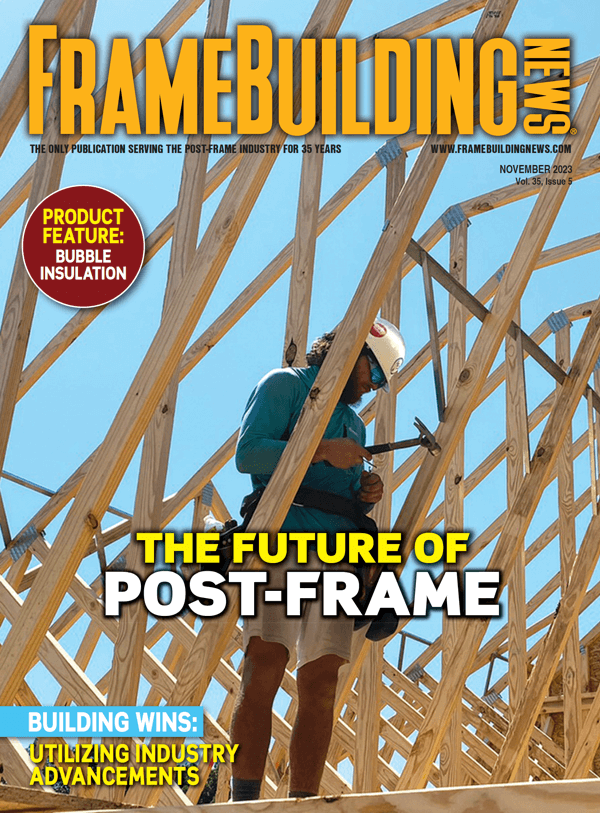By Linda Schmid
The most important thing you can do for the posts that lay the framework for your building project is to eliminate the possibility for oxygen, bacteria, bugs, and moisture to get to them in the first 6-8” from ground level. In fact, some experts say that the number one mistake made by less experienced builders is placing untreated posts in the ground with no protection.
One option is to use lumber treated with chromated Arsenicals or CCA, applied through a high-pressure treatment that penetrates into the depths of the lumber. Glue or nail laminates may be used, in which case the below-ground portion is treated or double treated, and the above-ground portion which will not be exposed to the elements is untreated.
For pavilions, carports, decks, or any structure that has exposed posts, an exterior stain or other coating is advised to keep wood from breaking down over time.

Another way of protecting posts is to place a barrier around them, such as a high-density plastic or a waterproof emulsion. Sometimes both of these solutions are employed creating a double barrier.
Precast concrete posts, of course, do not need to be protected from rotting, and they are another way to keep the foundation strong.
Most of these solutions provide long warranties of up to 50 years; some have lifetime guarantees against rot. However, there are things that builders can do to make posts even safer. Ensure that water is kept away from the posts by putting downspouts in place to divert water from the building foundation. Proper ground drainage and overhangs can also help.
In the case of animal enclosures, ensure that waste is not coming in contact with posts, or consider adding protection to the post or use a pre-cast column underground.
Avoiding Calamity While Under Construction
Building collapse during construction is due to improper bracing 99% of the time. An incomplete building is at its weakest, yet it will have to withstand whatever Mother Nature throws at it: Tornado, significant snowfall, possibly even snow loads that are unusual for the geographical location. They may have to withstand hurricanes, rain storms, landslides, and more. However, even if no bad weather is predicted, a builder should always brace, just in case.
The requirements for bracing change based on the size of the build and lumber used, among other variables. Follow recommended bracing requirements from the Wood Truss Council of America (awc.org). Inexperienced builders should seek training or the advice of engineers and architects to avoid insufficient bracing.
Common Mistakes
Naturally, builders can feel rushed; they have a lot to do and they usually have other customers waiting, too. However, our experts remind everyone that safety and quality are Job One. It pays to make sure that the people you work with have the proper training to read drawings and blueprints and follow proper procedures. If this is not the case, make sure that the crew has at least one experienced builder who can direct the others.
When backfilling the posts, some builders will use lifts which are too large, resulting in too much settling and not enough pressure against the pole.
Some companies use solid 6×6 lumber as poles which can mean the CCA treatment has not fully permeated the pole. As time goes by and the lumber dries and cracks, the interior will rot.
Installation Tips

Ensure that the connectors used are appropriate for the task. This means considering not only whether the connector is meant for wood-to-wood or wood-to-metal connections, but also if it is sufficient for the climactic conditions and the load it will have to bear. The architect’s design should clearly specify what is required.
• When setting poles, constantly monitor it to be sure you are properly lined up with the wall. Plumb it both ways.
• Ensure that your holes are the same depths so that they will be flush.
• Using rock to backfill the post holes can minimize compaction and settling, giving you a more secure post.
• When using a protective barrier on your post, punching out a drainage hole to allow moisture to escape the wood can be helpful. Check with the manufacturer to see if they advise it.
• When using sleeves to protect posts, care must be taken not to damage the sleeve. If it is ruptured, whether by running a Bobcat into it, knocking it down, or any means, it is no longer sufficient protection for the post. Of course, handling the post roughly could damage any of the post solutions discussed here, with the possible exception of a plain post that is CCA treated.
Safety

The proper equipment can make any job easier — and safer! There are so many choices nowadays: augers, skid haulers, and bobcats for digging, skid loaders to move poles, and telehandlers to pick up and place poles. No one need strain their back to get this done.
If handling the poles by machine is not an option, ensure that you have enough people to carry the posts. There should be two people for a pole 12’ or longer.
Steel toe boots and helmets are good ideas on the construction site. FBN


















